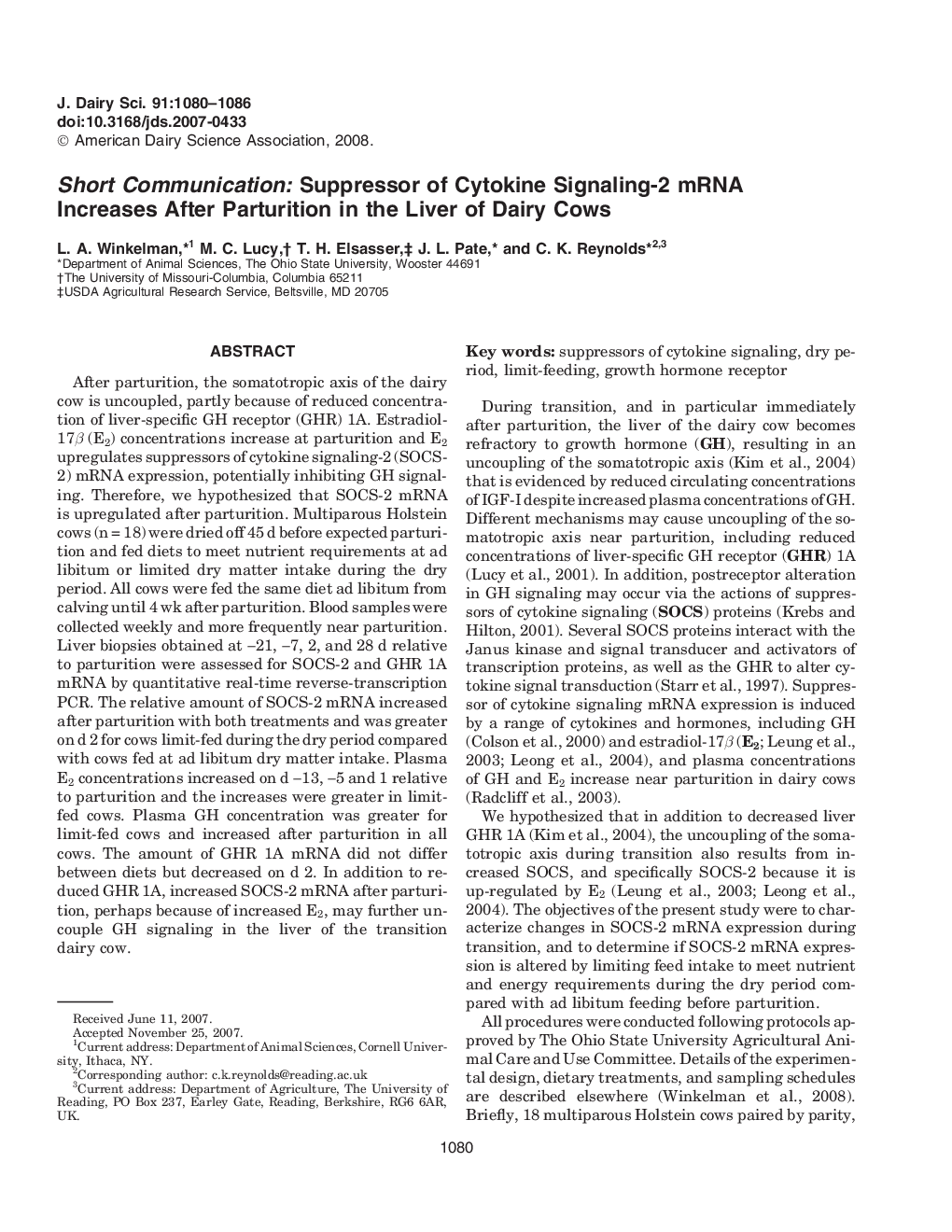| Article ID | Journal | Published Year | Pages | File Type |
|---|---|---|---|---|
| 2440505 | Journal of Dairy Science | 2008 | 7 Pages |
After parturition, the somatotropic axis of the dairy cow is uncoupled, partly because of reduced concentration of liver-specific GH receptor (GHR) 1A. Estradiol-17β(E2) concentrations increase at parturition and E2 upregulates suppressors of cytokine signaling-2 (SOCS-2) mRNA expression, potentially inhibiting GH signaling. Therefore, we hypothesized that SOCS-2 mRNA is upregulated after parturition. Multiparous Holstein cows (n = 18) were dried off 45 d before expected parturition and fed diets to meet nutrient requirements at ad libitum or limited dry matter intake during the dry period. All cows were fed the same diet ad libitum from calving until 4 wk after parturition. Blood samples were collected weekly and more frequently near parturition. Liver biopsies obtained at - 21, - 7, 2, and 28 d relative to parturition were assessed for SOCS-2 and GHR 1A mRNA by quantitative real-time reverse-transcription PCR. The relative amount of SOCS-2 mRNA increased after parturition with both treatments and was greater on d 2 for cows limit-fed during the dry period compared with cows fed at ad libitum dry matter intake. Plasma E2 concentrations increased on d - 13, − 5 and 1 relative to parturition and the increases were greater in limit-fed cows. Plasma GH concentration was greater for limit-fed cows and increased after parturition in all cows. The amount of GHR 1A mRNA did not differ between diets but decreased on d 2. In addition to reduced GHR 1A, increased SOCS-2 mRNA after parturition, perhaps because of increased E2, may further uncouple GH signaling in the liver of the transition dairy cow.
